

Chicken
Buyer's Guide


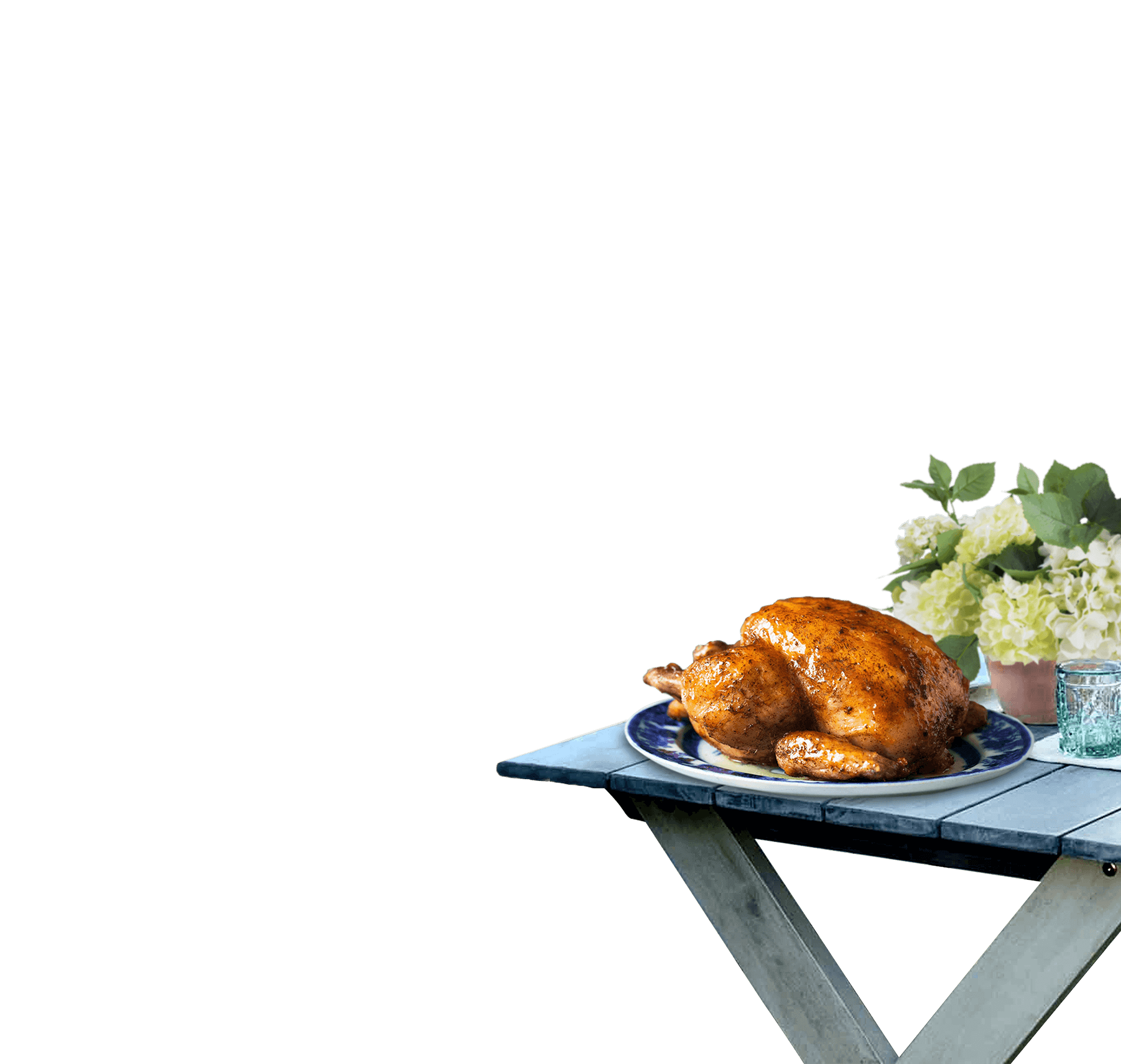
The World's Favorite Meat
America's Broiler Chicken
The United States of America is one of the largest producers of food products in the world. Of all meat products available, chicken is the most popular with consumers for a variety of reasons.
Chicken is low calorie and high in protein. It is lower in both saturated fat and cholesterol compared to other meats, and is rich in vitamin A and vitamin E.
All over the world, consumers enjoy high quality poultry and poultry products from the U.S. Each year, the U.S. produces more than 14 million tons of poultry products (including chicken, turkey, and duck), as well as nearly 77 billion shell eggs.
Producers and consumers alike insist on quality in every step of the process, from growout to processing and distribution, and U.S.A chicken products consistently exceed expectations.
The United States of America is one of the largest producers of food products in the world. Of all meat products available, chicken is the most popular with consumers for a variety of reasons.
Chicken is low calorie and high in protein. It is lower in both saturated fat and cholesterol compared to other meats, and is rich in vitamin A and vitamin E.
All over the world, consumers enjoy high quality poultry and poultry products from the U.S. Each year, the U.S. produces more than 14 million tons of poultry products (including chicken, turkey, and duck), as well as nearly 77 billion shell eggs.
The best products begin with the best chickens. The modern domesticated broiler chicken descended from the wild Bankiva, which was domesticated in India over 4,000 years ago. The earliest settlers in America brought chickens with them.
Today’s broiler chickens come from breeding stock that is the result of years of genetic selection by top poultry scientists. The modern bird yields a high percentage of tasty, nutritious meat without the use of artificial ingredients or added hormones.
The U.S. chicken production region is concentrated mainly in the southeast from Delaware to Texas, where broilers are grown by individual farmers. These chickens are fed a diet of high protein grains, such as corn and soy. Broilers are grown to market size in about seven weeks in automated, climate-controlled houses.
The best products begin with the best chickens. Today’s broiler chickens come from breeding stock that is the result of years of genetic selection by top poultry scientists. The modern bird yields a high percentage of tasty, nutritious meat without the use of artificial ingredients or added hormones.
The U.S. chicken production region is concentrated mainly in the southeast from Delaware to Texas, where broilers are grown by individual farmers. These chickens are fed a diet of high protein grains, like corn and soy. Broilers are grown to market size in about seven weeks in automated, climate-controlled houses.
Vertically integrated companies process, market, and distribute U.S. poultry products. Cleanliness is the highest priority inside the processing plant. Plants routinely shut down daily for thorough sanitizing washdowns. Maintaining this level of quality and cleanliness requires constant attention.
Most U.S. broiler processing plants also employ personnel certified to slaughter birds using methods that comply with religious requirements.
Furthermore, most U.S. processors have advanced research and testing laboratories on site. Plants also work closely with poultry research labs and universities in their individual states. This collaboration allows plants to exceed the existing high quality standards set by the U.S. Department of Agriculture.
Vertically integrated companies process, market, and distribute U.S. poultry products. Cleanliness is the highest priority inside the processing plant. Plants routinely shut down for thorough sanitizing washdowns. Maintaining this level of quality and cleanliness requires constant attention.
Plants work with poultry research labs and universities in their individual states which allows plants to exceed the high quality standards set by the USDA.
The United States Department of Agriculture (USDA) has the strictest inspection standards in the world for all phases of poultry processing. By law, a minimum of four separate inspections are required for each individual bird.
The first inspection phase starts with the live bird and continues throughout the slaughter, processing, and packaging phases.
The USDA employs more than 7,000 thoroughly trained food safety inspectors, and every poultry processing line in America is supervised by one to three inspectors.
Many food safety inspectors have agricultural training or food science education, and many others have earned degrees in veterinary medicine.
The United States Department of Agriculture (USDA) has the strictest inspection standards in the world for all phases of poultry processing. By law, a minimum of four separate inspections are required for each individual bird.
The first inspection phase starts with the live bird and continues throughout the slaughter, processing, and packaging phases.
The USDA employs more than 7,000 thoroughly trained food safety inspectors, and every poultry processing line in America is supervised by one to three inspectors.
After broiler chicken products have been processed, they are ready for packaging and distribution throughout the U.S. and overseas.
Products that are intended for retail sale are packaged using a variety of methods that preserve freshness. For the export poultry market, products are blast-frozen and generally packed in bulk.
When it comes to shipping and distribution, U.S poultry producers are the experts. In the domestic market, products leave the plant in refrigerated trucks that are scrubbed and sanitized thoroughly after every load.
Export chicken products are blast-frozen at the plant or a nearby location. Frozen broiler products may travel aboard reefer cargo vessels, or in ocean-going refrigerated containers. In every case, temperature is monitored constantly to ensure safe transport.
Altogether, the United States poultry industry is a precisely monitored and tightly integrated system that produces the best chicken in the world.
After broiler chicken products have been processed, they are ready for packaging and distribution throughout the U.S. and overseas.
In the domestic market, products leave the plant in refrigerated trucks that are scrubbed and sanitized thoroughly after every load.
Export chicken products are blast-frozen at the plant or a nearby location. Frozen broiler products may travel aboard reefer cargo vessels, or in ocean-going refrigerated containers. Temperature is monitored constantly to ensure safe transport.



Quality Inspection
All chicken meat that the U.S. exports must be inspected and approved by the Food Safety Inspection Service (FSIS) of the United States Department of Agriculture (USDA).
The 90-year-old agency is regarded as a model for food safety and inspection services worldwide, which is an integral reason why the U.S. produces the highest quality chicken.
When a product earns the USDA inspection stamp, it indicates that the product was properly processed, inspected, and the chicken is safe to eat.
There are three integral layers in FSIS assurance:
- Manual Inspection
- HACCP
- Pathogen Reduction
All chicken meat that the U.S. exports must be inspected and approved by the Food Safety Inspection Service (FSIS).
When a product earns the USDA inspection stamp, it indicates that the product was properly processed, inspected, and the chicken is safe to eat.
According to the FSIS, manual poultry inspection has several functions:
- Detect diseased meat and remove it from the production line
- Assure sanitary handling and preparation
- Prevent adulteration and false labeling
- Apply inspection insignia
Federal food safety inspectors are in place at every poultry plant in the United States examining each chicken carcass as it moves through the processing channel.
Inspectors are actively involved at each step: plant construction, antemortem inspection, postmortem inspection, product inspection, product content determination, control and restriction of condemned products and marking, labeling, and the application of inspection insignia.
Although traditional manual poultry inspection is thorough, it cannot detect microscopic or invisible defects. For this reason, the HACCP and Pathogen Reduction layers are also required for complete food safety assurance.
Manual poultry inspection functions: Detect diseased meat and remove it from the production line, assure sanitary handling and preparation, prevent adulteration and false labeling, and apply inspection insignia
Federal food safety inspectors are in place at every poultry plant in the United States examining each chicken carcass as it moves through the processing channel.
The FSIS introduced Hazard Analysis and Critical Control Points (HACCP) food safety procedures on July 25, 1996, alongside the Final Rule on Pathogen Reduction. The aim of this new approach is twofold:
- Target pathogens that cause foodborne illness; and
- Increase the industry’s awareness of its responsibility to produce safe food.
HACCP is a procedure that seeks to identify and control the points in processing at which contamination can occur. Since HACCP food safety systems are designed to accommodate specific plant requirements, the process design varies from plant to plant.
A typical HACCP process involves the seven steps…
The FSIS introduced Hazard Analysis and Critical Control Points (HACCP) food safety procedures, alongside the Final Rule on Pathogen Reduction. The aim of this new approach is to target pathogens that cause foodborne illness, and increase the industry’s awareness of its responsibility to produce safe food.
A typical HACCP process involves the seven steps…
Step One: Identify hazards in the food processing system.
Example: Bacteria
Step Two: Identify critical control points at which potential hazards can be eliminated or reduced in the processing channel.
Examples: Cleaning, cooking, chilling, handling, and storage
Step One: Identify hazards in the food processing system.
Step Two: Identify critical control points at which potential hazards can be eliminated or reduced in the processing channel.
Step Three: Establish preventive measures with critical limits for each control point.
Examples: Time and temperature are examples of critical limits. Poultry must be chilled to 40°F (4.4°C) during processing to prevent bacteria from growing. In this case, 40°F (4.4°C) would be the critical limit.
Step Four: Establish procedures to monitor the control points.
Example: Where temperature has been identified as a critical limit, product samples would be checked at fixed intervals to ensure that the temperature is within the critical limit.
Step Three: Establish preventive measures with critical limits for each control point.
Step Four: Establish procedures to monitor the control points.
Step Five: Establish procedures for taking corrective actions when monitoring indicates that a critical limit has not been met.
Example: Take steps to lower the temperature in the chiller.
Step Six: Establish effective recordkeeping about the HACCP system.
Example: Regarding temperature monitoring, records would be kept of temperature measurements and the corrective action taken if applicable.
Step Five: Establish procedures for taking corrective actions when monitoring indicates that a critical limit has not been met.
Step Six: Establish effective recordkeeping about the HACCP system.
Step Seven: Establish procedures to certify that monitoring equipment is always effective.
Example: On temperature monitoring, the temperature gauges would be tested at fixed intervals to ensure that they are working properly.
Step Seven: Establish procedures to certify that monitoring equipment is always effective.
The pathogen reduction initiative has two key aspects:
- FSIS has established pathogen reduction performance standards for salmonella to verify that HACCP systems are effective in reducing bacterial contamination. Plants must ensure that their contamination rate is below the current national rate.
- Slaughter plants are required to conduct microbial testing for generic E. coli to verify that their process control systems have prevented fecal contamination, which is the primary vehicle for harmful bacteria.
The pathogen reduction initiative completes the FSIS assurance that U.S. chicken is safe to eat.
FSIS established pathogen reduction performance standards for salmonella to verify that HACCP systems are effective in reducing bacterial contamination.
Slaughter plants are required to conduct microbial testing for generic E. coli to verify that their process control systems have prevented fecal contamination, which is the primary vehicle for harmful bacteria.
The traditional FSIS form of manual inspection is a thorough, comprehensive system, however, it cannot detect microscopic or invisible issues.
The incorporation of HACCP and the Final Rule on Pathogen Reduction add scientific dimensions to the inspection process.
HACCP food safety systems dramatically reduce potential hazards in the manufacturing process, while the pathogen reduction initiative prevents contaminated products from entering the marketplace.
The combination of manual inspection, HACCP, and pathogen reduction measures ensure that consumers around the world confidently enjoy safe, sanitary, and high quality U.S. chicken products.
The traditional FSIS form of manual inspection is a thorough system, but, it cannot detect microscopic issues. The incorporation of HACCP and the Final Rule on Pathogen Reduction add scientific dimensions to the inspection process.
Manual inspection, HACCP, and pathogen reduction measures ensure high quality U.S. chicken products.




Classifications
Broilers, sometimes referred to as fryers, are a popular U.S. poultry product. Broilers are young chickens, usually 6 to 10 weeks of age. Broiler birds may be male or female and will produce tender meat.
The dressed weight of whole broiler chickens will range from 2.50 pounds (1.13 kilograms) or more.
Image provided by Aviagen
Broilers, sometimes referred to as fryers, are a popular U.S. poultry product. They are young male or female chickens, usually 6 to 10 weeks of age. The dressed weight of whole broiler chickens will range from 2.50 pounds (1.13 kilograms) or more.
Image provided by Aviagen
Roasters have the same general characteristics as broilers, except their dressed weight will be larger, 5 pounds (2.27 kilograms) or more.
Roasters are processed between 7 to 12 weeks of age and are generally sold as whole birds.
Image provided by Aviagen
Roasters have the same general characteristics as broilers, except their dressed weight will be larger, 5 pounds (2.27 kilograms) or more.
Roasters are processed between 7 to 12 weeks of age and are generally sold as whole birds.
Image provided by Aviagen
The Rock Cornish hen, or simply Rock Cornish, is a young, immature type of chicken, usually 5 to 6 weeks of age, with a dressed weight of under 2 pounds (.91 kilograms).
Hens are mature female chickens, and this classification generally refers to spent hens. Hens are also known as fowl, and they may be further classified as “heavy hens” or “light hens” depending on the breed and weight.
Hens are commonly used for stewing and baking, or hen meat may be deboned for use in processed meats.
Image provided by Aviagen
The Rock Cornish hen (Rock Cornish), is a young/immature type of chicken, usually 5 to 6 weeks of age, weighing under 2 pounds (.91 kilograms). Hens are mature female chickens, referred as spent hens (also known as fowl, “heavy hens” or “light hens”.)
Image provided by Aviagen
Roosters are mature male chickens with coarse skin and toughened, dark meat. This classification generally refers to spent rooster breeders that are deboned and used in processed meats.
Image provided by Aviagen
Roosters are mature male chickens with coarse skin and toughened, dark meat. This classification generally refers to spent rooster breeders that are deboned and used in processed meats.
Image provided by Aviagen



Uncooked
The list of products is not exclusive. Product offerings may vary by company.
The list of products is not exclusive. Product offerings may vary by company.
Uncooked whole chickens are marketed as either fresh or frozen. They may be packaged individually, carrying a producer’s or processor’s brand name.
Whole fresh and frozen chickens usually include a giblet pack, which contains the neck, heart, liver, and gizzard parts. If a whole chicken is not packaged with giblets, it may be labeled “without giblets” (WOGS) or “without giblets and neck” (WOGN).
Whole broiler chickens will either have white or yellow skin, which is generally determined by natural ingredients in the bird’s diet. Different regional markets may prefer one chicken skin color over the other, depending on customer preference.
Uncooked whole chickens are marketed as fresh or frozen and may be packaged individually, carrying a producer or processor’s brand. They usually include a giblet pack containing the neck, heart, liver, and gizzard parts. When it is not packaged with giblets, it may be labeled “without giblets” (WOGS) or “without giblets and neck” (WOGN).
Roasters are one of the larger varieties of whole uncooked chickens and may be sold with giblets or without.
Roasters are one of the larger varieties of whole uncooked chickens and may be sold with giblets or without.
The whole broiler chicken is cut into two breast halves with the ribs and back portion; two thighs with the back portion; two drumsticks; and two wings, for a total of eight pieces.
The frozen chicken parts are packaged and labeled as “whole cut-up chicken,” and are usually sold without giblets.
The whole broiler chicken is cut into two breast halves with the ribs and back portion; two thighs with the back portion; two drumsticks; and two wings, for a total of eight pieces.
The frozen chicken parts are packaged and labeled as “whole cut-up chicken,” and are usually sold without giblets.
Broilers may be cut into nine pieces for marketing. These include one breast keel portion; two breast sides or ribs; two thighs; two wings; and two drumsticks, for a total of nine frozen chicken pieces.
The nine-piece cut broiler is marketed primarily through food service outlets and fast food restaurants.
Broilers may be cut into nine pieces for marketing. These include one breast keel portion; two breast sides or ribs; two thighs; two wings; and two drumsticks, for a total of nine frozen chicken pieces.
The nine-piece cut broiler is marketed primarily through food service outlets and fast food restaurants.
Cornish hens are young, immature broiler chickens of either sex. Cornish hens are usually less than five weeks of age and weigh two pounds or less.
Cornish hens are young, immature broiler chickens of either sex. Cornish hens are usually less than five weeks of age and weigh two pounds or less.
In this cut, the broiler chicken is split from front to back through the backbone and keel to produce two halves of approximately equal weight. Each half contains equal parts of the backbone.
In this cut, the broiler chicken is split from front to back through the backbone and keel to produce two halves of approximately equal weight. Each half contains equal parts of the backbone.
Broiler halves may be divided further into breast quarters, which include the chicken wing and parts of the back. A broiler breast quarter is all white meat.
Broiler halves may be divided further into breast quarters, which include the chicken wing and parts of the back. A broiler breast quarter is all white meat.
A whole uncooked broiler leg consists of the drumstick and thigh combination. Unlike the leg quarter, the whole leg does not contain a portion of the back. One leg/thigh combination is considered a serving.
A whole uncooked broiler leg consists of the drumstick and thigh combination. Unlike the leg quarter, the whole leg does not contain a portion of the back. One leg/thigh combination is considered a serving.
A broiler breast quarter with the wing removed is marketed as the split breast. Split breasts are all white meat, and each part weighs 12 to 15 ounces (340 to 425 grams).
A broiler breast quarter with the wing removed is marketed as the split breast. Split breasts are all white meat, and each part weighs 12 to 15 ounces (340 to 425 grams).
The broiler split breast without back piece is produced by removing the wing and back portion from the broiler breast quarter.
The broiler split breast without back piece is produced by removing the wing and back portion from the broiler breast quarter.
A leg quarter is the drumstick and thigh portion, with one half of the portion of the back attached. Leg quarters may also include attached abdominal fat and up to two ribs.
A leg quarter is the drumstick and thigh portion, with one half of the portion of the back attached. Leg quarters may also include attached abdominal fat and up to two ribs.
Uncooked broiler drumsticks include the lower portion of the leg quarter, which is the portion between the knee joint and the hock. Drumsticks weigh 4 to 5 ounces (114 to 142 grams), and one serving is composed of two drumsticks.
Uncooked broiler drumsticks include the lower portion of the leg quarter, which is the portion between the knee joint and the hock. Drumsticks weigh 4 to 5 ounces (114 to 142 grams), and one serving is composed of two drumsticks.
The whole chicken wing is composed of three white meat sections:
1) The drumette
2) The mid-Section
3) The tip
The whole chicken wing is composed of three white meat sections:
1) The drumette
2) The mid-Section
3) The tip
The chicken wing drumette is the first section between the shoulder joint and the elbow.
The chicken wing drumette is the first section between the shoulder joint and the elbow.
This cut contains the section of the chicken wing between the elbow and the tip, which is also sometimes called the “wing flat” or “mid-joint.”
This cut contains the section of the chicken wing between the elbow and the tip, which is also sometimes called the “wing flat” or “mid-joint.”
This cut contains the flat center section of the chicken wing as well as the flipper, also known as the “wing tip.”
This cut contains the flat center section of the chicken wing as well as the flipper, also known as the “wing tip.”
The broiler thigh is the portion of the leg above the knee joint.
The broiler thigh with back portion is produced by separating the broiler leg quarter at the knee joint. The broiler thigh without back portion is produced by separating the whole leg at the knee joint.
This cut contains no rib or back meat.
The broiler thigh is the portion of the leg above the knee joint. The broiler thigh with back portion is produced by separating the broiler leg quarter at the knee joint. The broiler thigh without back portion is produced by separating the whole leg at the knee joint. This cut contains no rib or back meat.
The boneless, skinless chicken leg meat cut is produced by removing the skin and bone from broiler leg quarters. Coarse ground chicken is made from boneless, skinless leg meat.
The boneless, skinless chicken leg meat cut is produced by removing the skin and bone from broiler leg quarters. Coarse ground chicken is made from boneless, skinless leg meat.
Boneless, skinless chicken thigh meat is produced by removing the skin and bone from only the thigh portion of broiler leg quarters.
Boneless, skinless chicken thigh meat is produced by removing the skin and bone from only the thigh portion of broiler leg quarters.
This cut comes from breast halves that have been skinned and deboned. Each breast half is considered one serving. The pectoralis major and minor muscles may be separated to produce chicken tenderloin and boneless breast cuts.
This cut comes from breast halves that have been skinned and deboned. Each breast half is considered one serving. The pectoralis major and minor muscles may be separated to produce chicken tenderloin and boneless breast cuts.
A giblet pack includes the chicken gizzard, heart, liver, and neck chicken parts. When a giblet pack is included as part of the whole bird, the pieces are wrapped in paper or sealed in plastic, then stored inside the bird cavity. Giblets may also be sold separately.
A giblet pack includes the chicken gizzard, heart, liver, and neck chicken parts. When a giblet pack is included as part of the whole bird, the pieces are wrapped in paper or sealed in plastic, then stored inside the bird cavity. Giblets may also be sold separately.
Chicken feet are the combination of the lower leg and foot with the skin and toenails removed, whereas chicken paws contain the foot portion only.
Frozen chicken feet and paws are packaged bulk in plastic bags. For shipment, the bags are packed into corrugated fiber cartons.
Chicken feet are the combination of the lower leg and foot with the skin and toenails removed, whereas chicken paws contain the foot portion only.
Frozen chicken feet and paws are packaged bulk in plastic bags. For shipment, the bags are packed into corrugated fiber cartons.
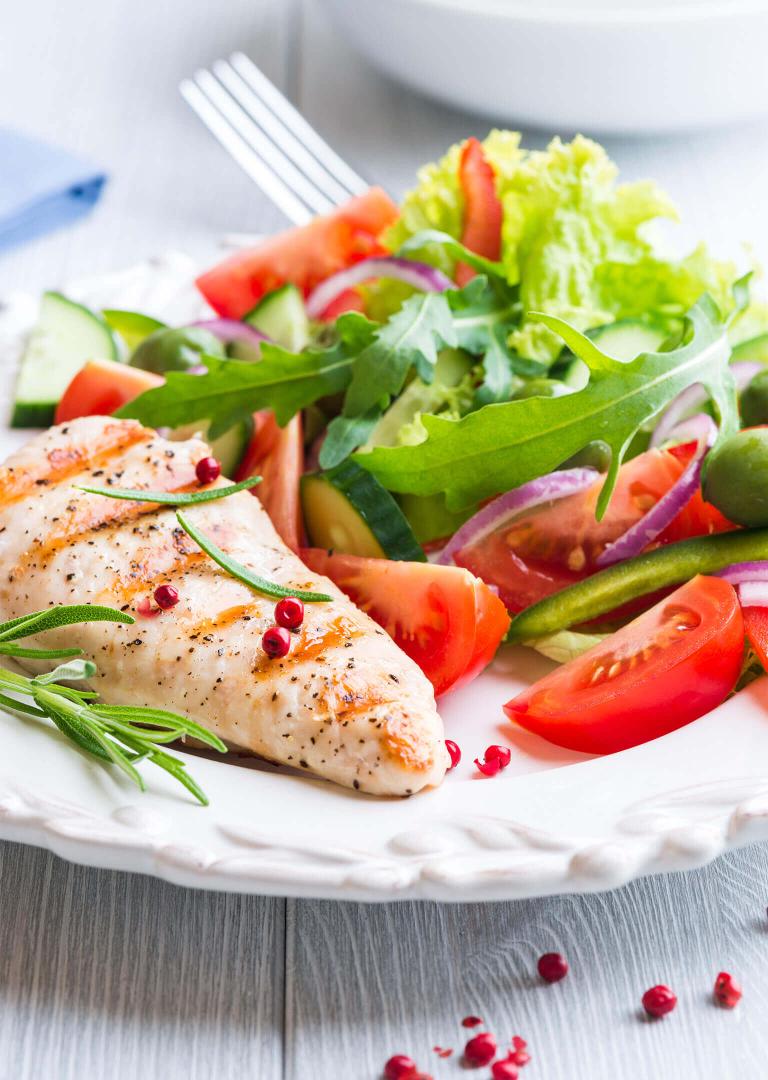

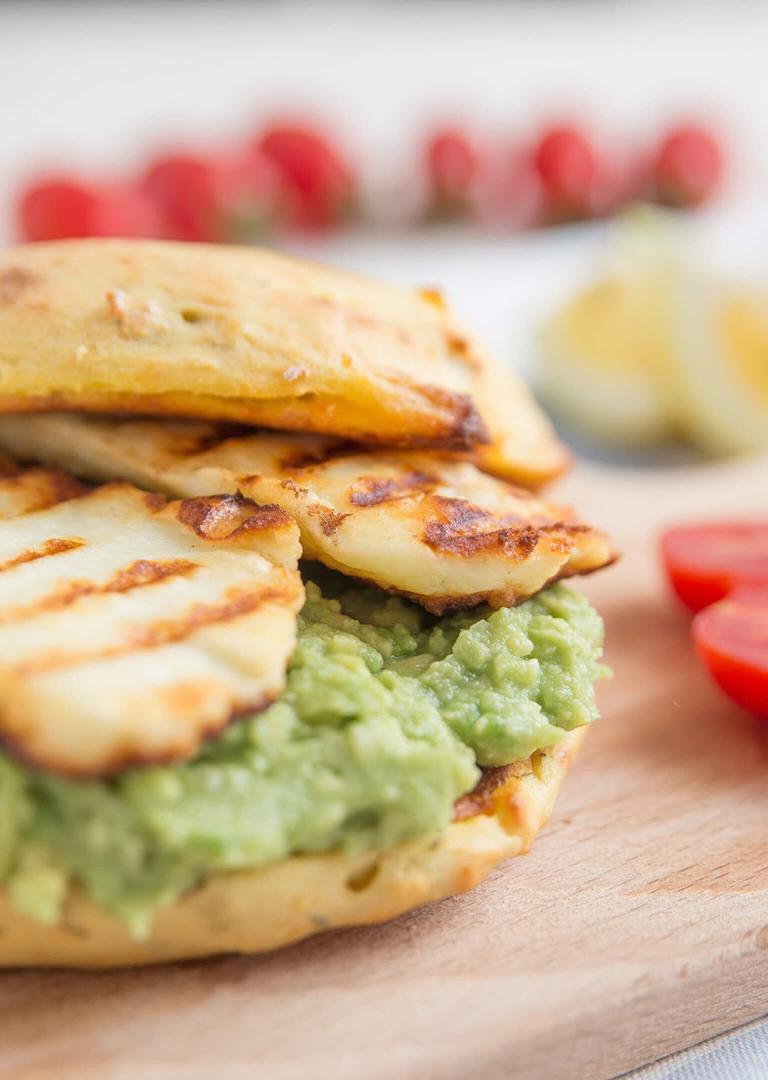

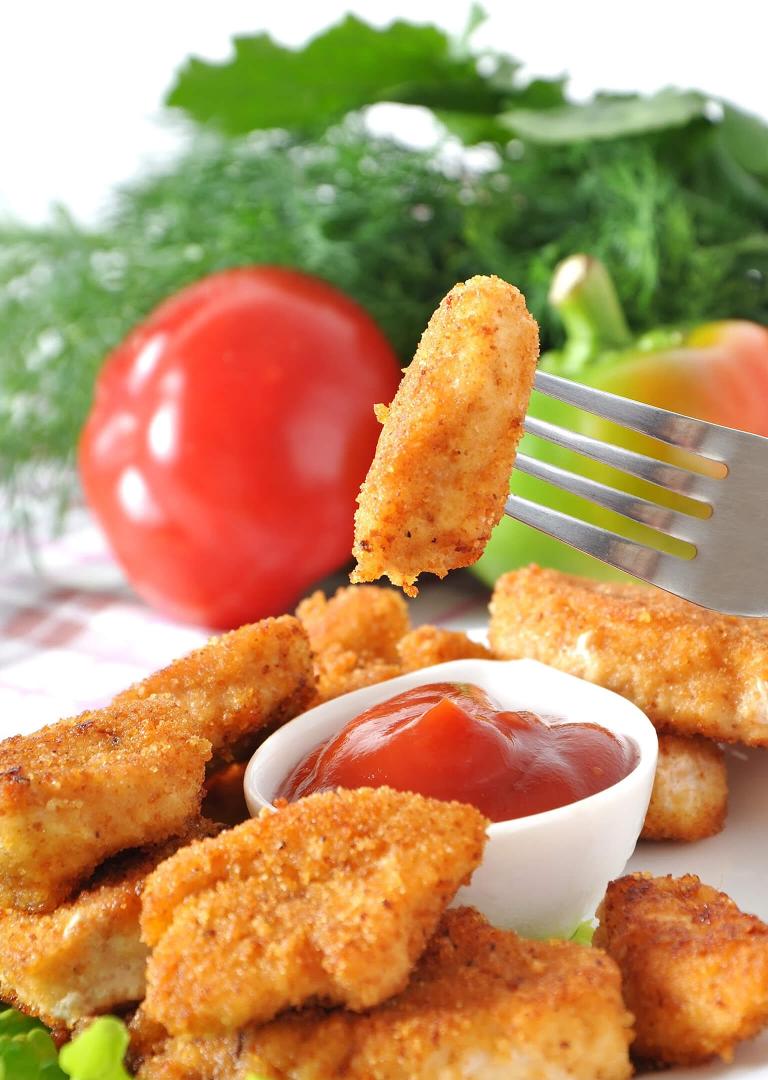


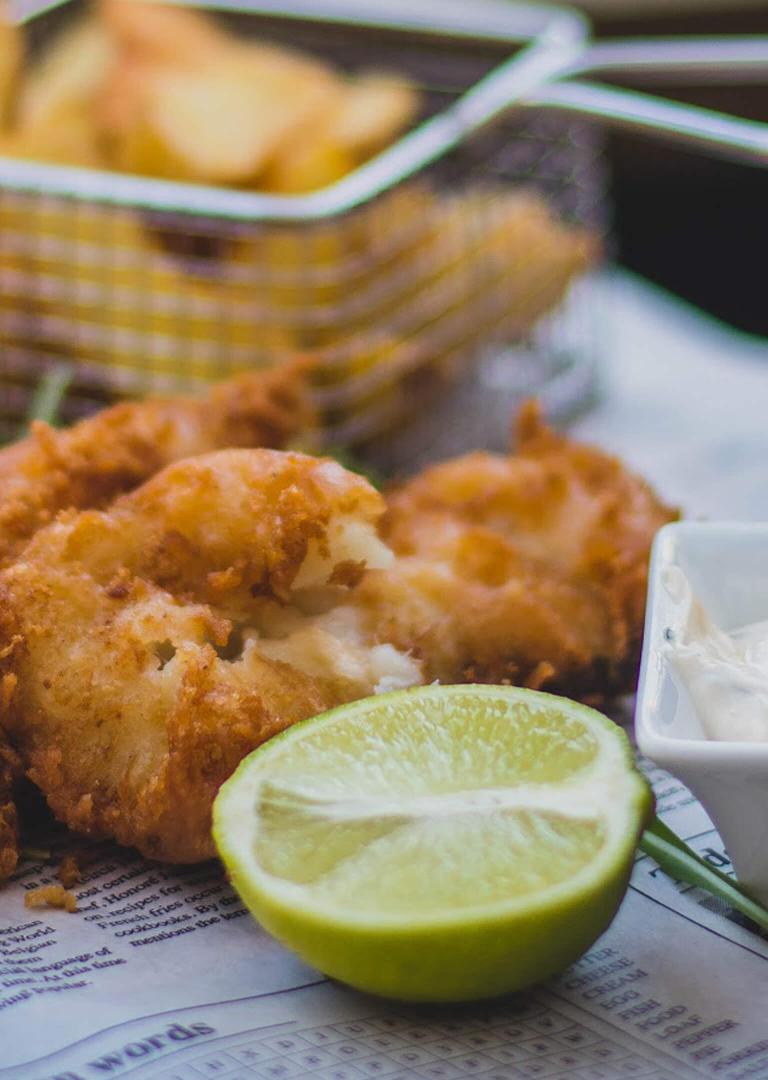



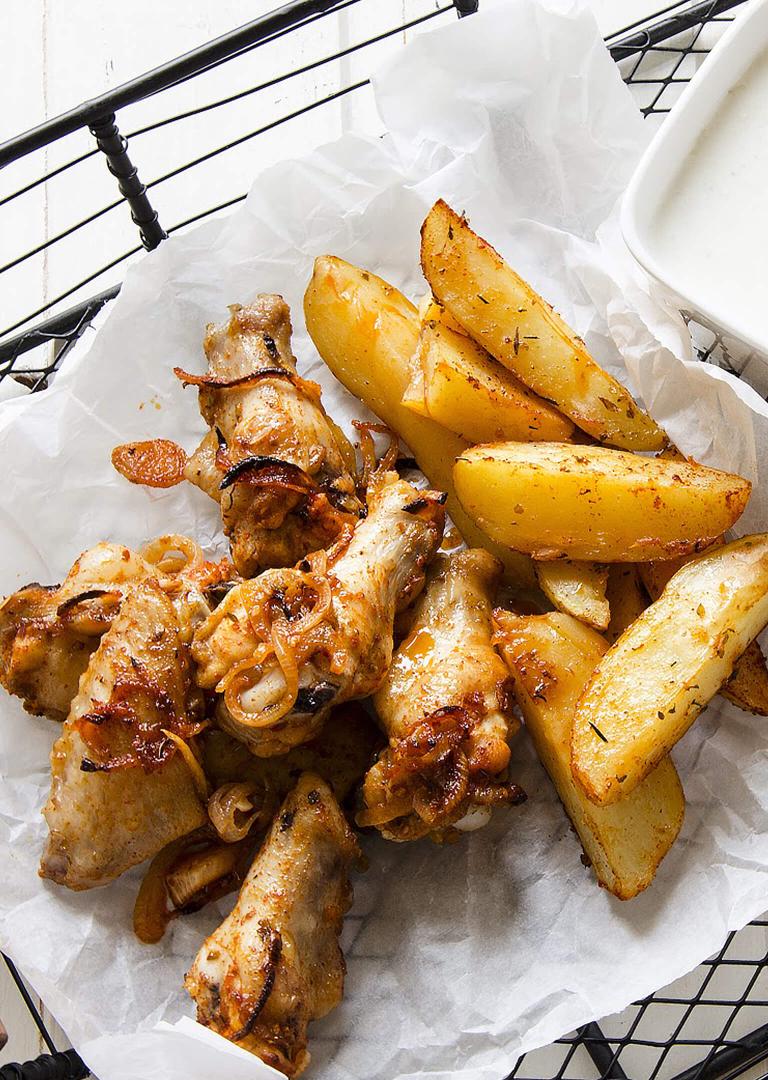



Processed
Further processed chicken products are simply products that require additional handling before they may be consumed.
All raw and uncooked products are considered further processed, as are all cooked, breaded, dehydrated, rendered, and ready to cook chicken products offered in the marketplace.
Further processed chicken products are simply products that require additional handling before they may be consumed.
All raw and uncooked products are considered further processed, as are all cooked, breaded, dehydrated, rendered, and ready to cook chicken products offered in the marketplace.
Cutlets are uniformly breaded to reduce fryer fall off, and to save time and labor. They are fully cooked, so preparation time is short, which cuts foodservice costs.
Cutlets are uniformly breaded to reduce fryer fall off, and to save time and labor. They are fully cooked, so preparation time is short, which cuts foodservice costs.
Grilled chicken breasts are fully cooked to save time and labor, as well as eliminate the risks of undercooking. These products are skinless and are not breaded, which means they have a low calorie count per serving, and the delicious marinade ensures moist, juicy flavor.
Grilled chicken breasts are fully cooked to save time and labor, as well as eliminate the risks of undercooking. These products are skinless and are not breaded, which means they have a low calorie count per serving, and the delicious marinade ensures moist, juicy flavor.
Breaded chicken breasts require less time and labor to prepare, and uniform breading coverage prevents fryer fall-off. They are fully cooked to eliminate the risk of serving them raw, and customers appreciate the wide variety of flavors available.
Breaded chicken breasts require less time and labor to prepare, and uniform breading coverage prevents fryer fall-off. They are fully cooked to eliminate the risk of serving them raw, and customers appreciate the wide variety of flavors available.
Chicken nuggets and tenders are fully cooked for reduced preparation time and labor and carry no risk of being served raw. They are available in a variety of styles and seasoning, which makes them ideal for snack foods or appetizers.
Chicken nuggets and tenders are fully cooked for reduced preparation time and labor and carry no risk of being served raw. They are available in a variety of styles and seasoning, which makes them ideal for snack foods or appetizers.
Unbreaded individually quick frozen (IQF) chicken pieces are frozen in minutes to preserve the products’ natural tender qualities and reduce bacteria growth. Due to the variety of individually frozen cuts, operators can use products on an “as needed” basis. IQF chicken pieces are pre-cleaned and may be cooked straight from the freezer.
Because the birds are sized by computers, piece counts and portions are always consistent, which helps manage foodservice costs. Furthermore, all IQF chicken pieces have a long shelf life, which makes inventory easy to track and reduces the risk of stock depletion.
Unbreaded individually quick frozen (IQF) chicken pieces are frozen in minutes to preserve the products’ natural tender qualities and reduce bacteria growth. IQF chicken pieces are pre-cleaned and may be cooked straight from the freezer. All IQF chicken pieces have a long shelf life, which makes inventory easy to track and reduces the risk of stock depletion.
Breaded individually quick frozen (IQF) chicken pieces are fast and easy to prepare, and customers enjoy the moist, juicy texture. These chicken pieces are premium cut, individually frozen, and portion controlled to minimize waste. They are available as individually wrapped portions or bulk packed to meet the needs of all retail and foodservice buyers.
Breaded IQF chicken pieces have a high perceived value, which helps vendors control costs while still conveying an upmarket image. They come pre-cleaned and trimmed to save time and labor, as well as reduce the risk of bacteria growth, which further contributes to their long shelf life.
Breaded individually quick frozen (IQF) chicken pieces are premium cut, individually frozen, and portion controlled to minimize waste. They are available as individually wrapped portions or bulk packed to meet the needs of all retail and foodservice buyers. They come pre-cleaned and trimmed to save time and labor.
Chicken breast tenders come from all natural breast tenderloin meat. Customers enjoy the homemade style, and operators appreciate the versatility in menu planning. The unique marinade and seasoning offer great tasting flavor, and a plump, juicy texture. Breast tenders’ light breading absorbs less shortening and has a healthier image.
Breast tenders are available in a variety of package sizes which accommodate operator usage and handling requirements, and smaller pack sizes increase distributor inventory turns.
Chicken breast tenders come from all natural breast tenderloin meat. Breast tenders’ light breading absorbs less shortening and has a healthier image. They are available in a variety of package sizes which accommodate operator usage and handling requirements, and smaller pack sizes increase distributor inventory turns.
Pre-breaded and cooked chicken wings save time and labor in preparation and offer minimal fryer fall-off. They come in a wide assortment of flavors, and customers love the variety of options.
Pre-breaded and cooked chicken wings save time and labor in preparation and offer minimal fryer fall-off. They come in a wide assortment of flavors, and customers love the variety of options.
These wings are pre-marinated to maintain flavor after frying, and stay tender and juicy, even under a hot lamp. They are pre-breaded for quick preparation, which saves time and keeps costs low.
These wings are pre-marinated to maintain flavor after frying, and stay tender and juicy, even under a hot lamp. They are pre-breaded for quick preparation, which saves time and keeps costs low.
Unbreaded, fully cooked marinated wings are preglazed in a variety of flavors that customers love. These wings are quick and easy to prepare and can go from freezer to plate in minutes.
Unbreaded, fully cooked marinated wings are preglazed in a variety of flavors that customers love. These wings are quick and easy to prepare and can go from freezer to plate in minutes.
Ready to cook chicken wings have many menu applications and can be prepared quickly for time and cost savings. These wings are ice glazed to prevent freezer burn.
Ready to cook chicken wings have many menu applications and can be prepared quickly for time and cost savings. These wings are ice glazed to prevent freezer burn.

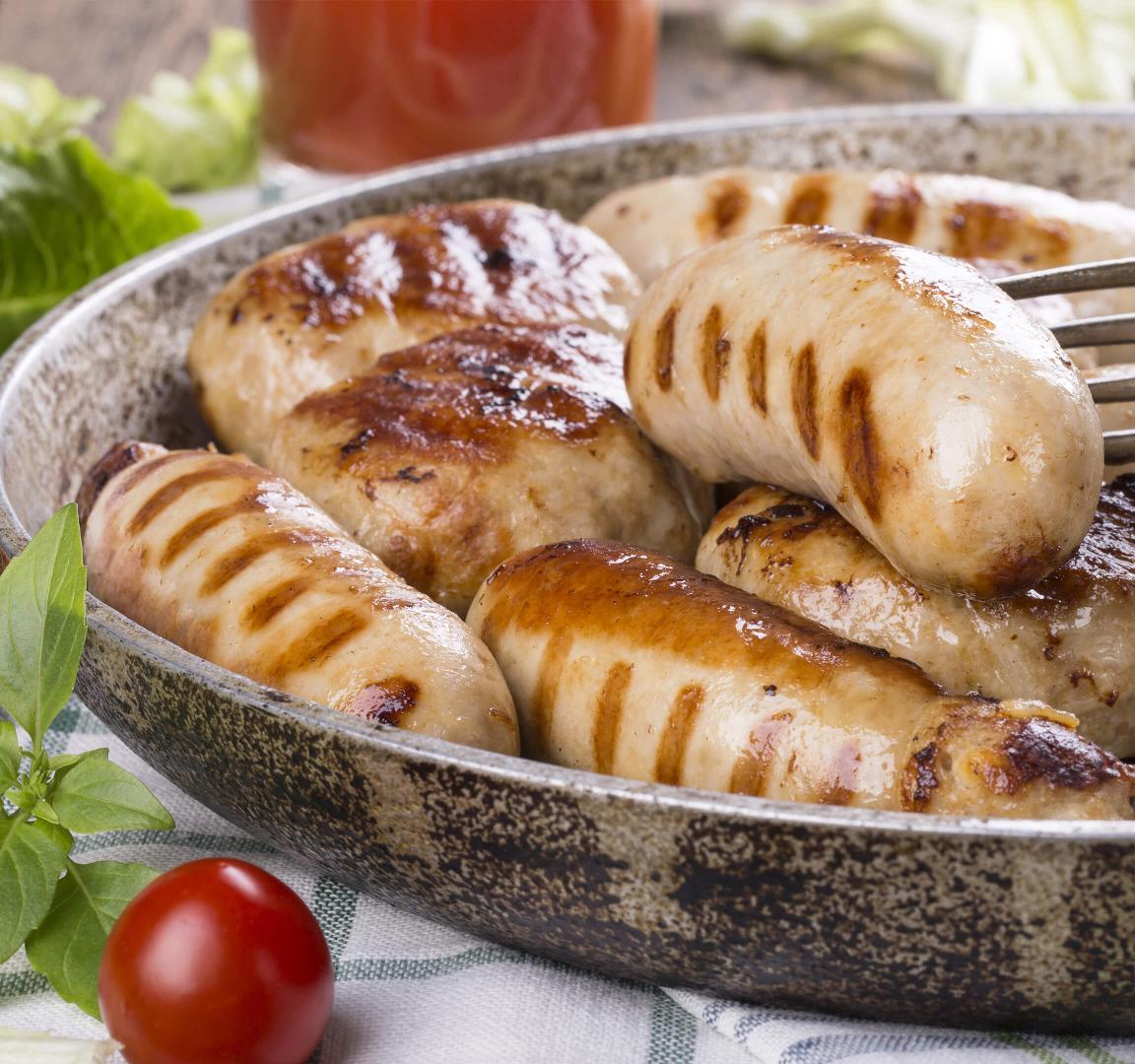


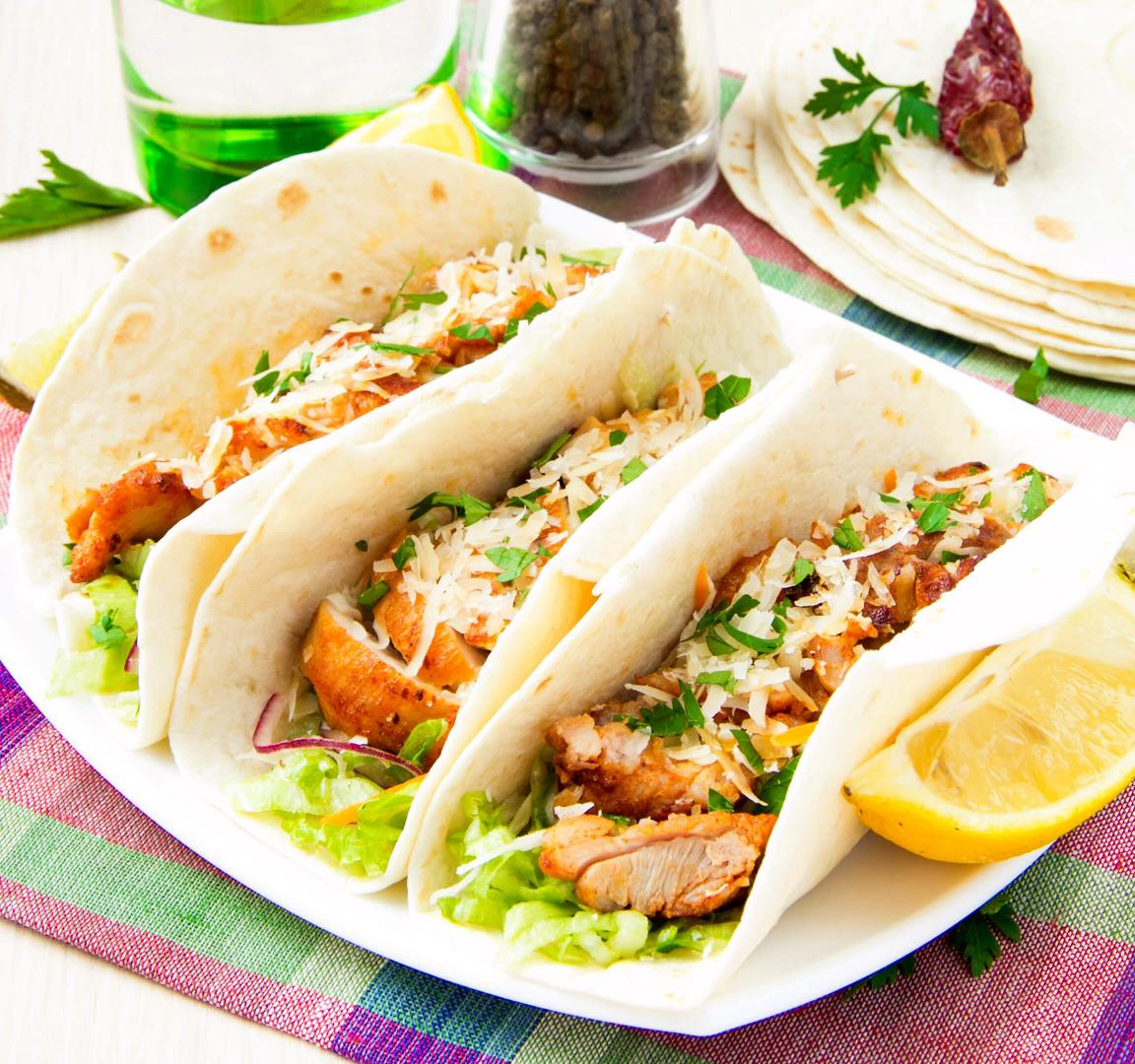
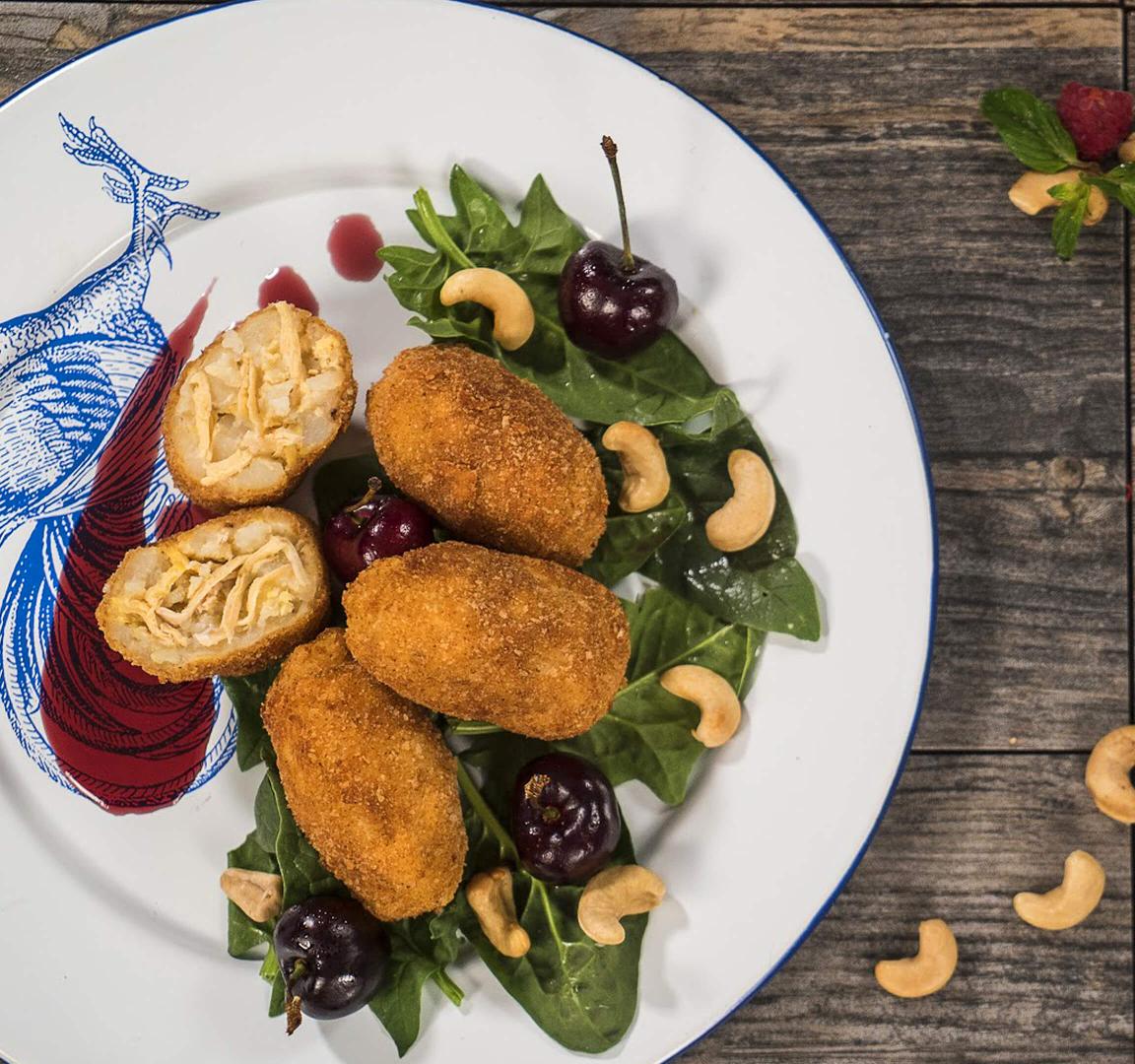




Prepared
Prepared chicken products are ready to eat with minimum preparation. They include chicken sausage, pulled and diced chicken meat, and pre-cooked whole chickens and chicken parts.
This classification also includes breaded products that are raw and ready-to-cook, fully cooked (requiring only warming prior to serving), and blanched products that have been partially cooked.
Make sure to always read the product label and follow the instructions provided to prepare and serve all chicken products.
Prepared chicken products are ready to eat with minimum preparation. They can include chicken sausage, pulled and diced chicken meat, pre-cooked whole chickens, chicken parts, and breaded products that are raw and ready-to-cook.
Always read the product label and follow the instructions provided.
Chicken sausage is available in a variety of shapes, types, and sizes, including breakfast sausage.
Chicken frankfurters are a blend of mechanically deboned white and dark meat. Cocktail franks are miniature chicken frankfurters.
Chicken bologna is cured, seasoned, and mechanically deboned chicken meat.
Chicken sausage is available in a variety of shapes, types, and sizes, including breakfast sausage. Chicken frankfurters are a blend of mechanically deboned white and dark meat. Chicken bologna is cured, seasoned, and mechanically deboned chicken meat.
Mini-biscuit chicken sandwiches contain a breaded chicken patty made from both white and dark meat. They come packed in a single serving with two biscuits that are pre-cooked and ready for the microwave.
Mini-biscuit sandwiches are great for the snack area in convenience stores as prepared chicken meals.
Mini-biscuit chicken sandwiches contain a breaded chicken patty made from both white and dark meat. They come packed in a single serving with two biscuits that are pre-cooked and ready for the microwave.
Mini-biscuit sandwiches are great for the snack area in convenience stores as prepared chicken meals.
Whole cooked chickens are vacuum packaged, fully cooked and refrigerated, needing only to be heated before serving. They are available baked, smoked, barbecued, or roasted, and can be served hot from the deli.
Whole cooked chickens are vacuum packaged, fully cooked and refrigerated, needing only to be heated before serving. They are available baked, smoked, barbecued, or roasted, and can be served hot from the deli.
Cooked chicken parts may be hot and ready to eat or come vacuum packaged. Fully cooked, sliced, boneless, skinless chicken breast meat goes into ready-to-eat sandwiches.
Product sizes, shapes, and methods of cooking will vary among the different companies that produce cooked chicken parts.
Cooked chicken parts may include whole roasted chicken breasts, whole oven roasted cornish hens, cooked thighs, cooked bone-in breast, hot wings, grilled broiler halves, and roasted drumsticks.
Cooked chicken parts may be hot and ready to eat or come vacuum packaged. Fully cooked, sliced, boneless, skinless chicken breast meat goes into ready-to-eat sandwiches. Cooked chicken parts may include whole roasted chicken breasts, whole oven roasted cornish hens, cooked thighs, cooked bone-in breast, hot wings, grilled broiler halves, and roasted drumsticks.
Canned chicken and chicken dinners include a range of products from whole chickens to chicken salads, baby foods, specialty meats, and ready to heat and eat chicken meals.
The U.S. chicken industry produces a multitude of these convenience foods.
Canned chicken and chicken dinners include a range of products from whole chickens to chicken salads, baby foods, specialty meats, and ready to heat and eat chicken meals.
The U.S. chicken industry produces a multitude of these convenience foods.
Diced and pulled chicken is usually made from spent fowl. This product is composed of boneless, skinless, fully cooked chicken meat.
Pulled chicken meat is separated from the bone and skin by hand. Diced chicken meat is pulled meat that is then further cut into cubes.
This product may be packaged as breast meat, leg meat, or combined breast and leg meat. When packaged in combination, the product label will note "natural proportions."
Diced and pulled chicken is usually made from spent fowl and is composed of boneless, skinless, fully cooked chicken meat. Pulled chicken meat is separated from the bone and skin by hand. Diced chicken meat is pulled meat and then further cut into cubes. It may be packaged as breast meat, leg meat, or combined breast and leg meat (labeled "natural proportions").
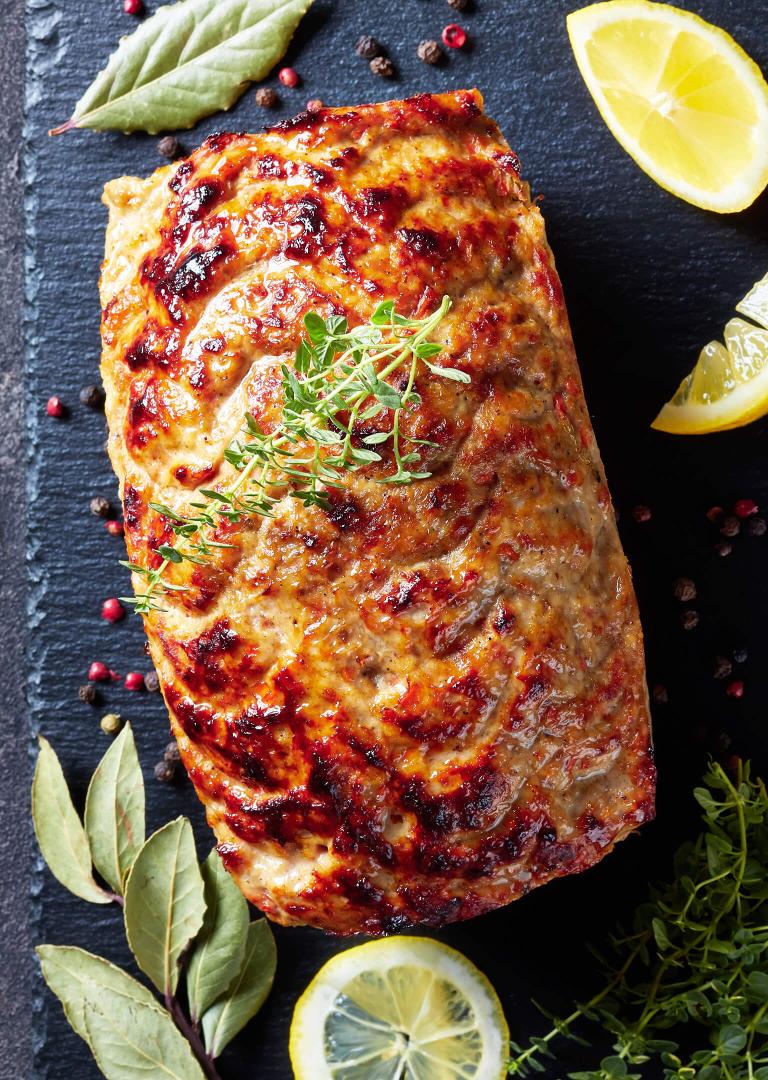

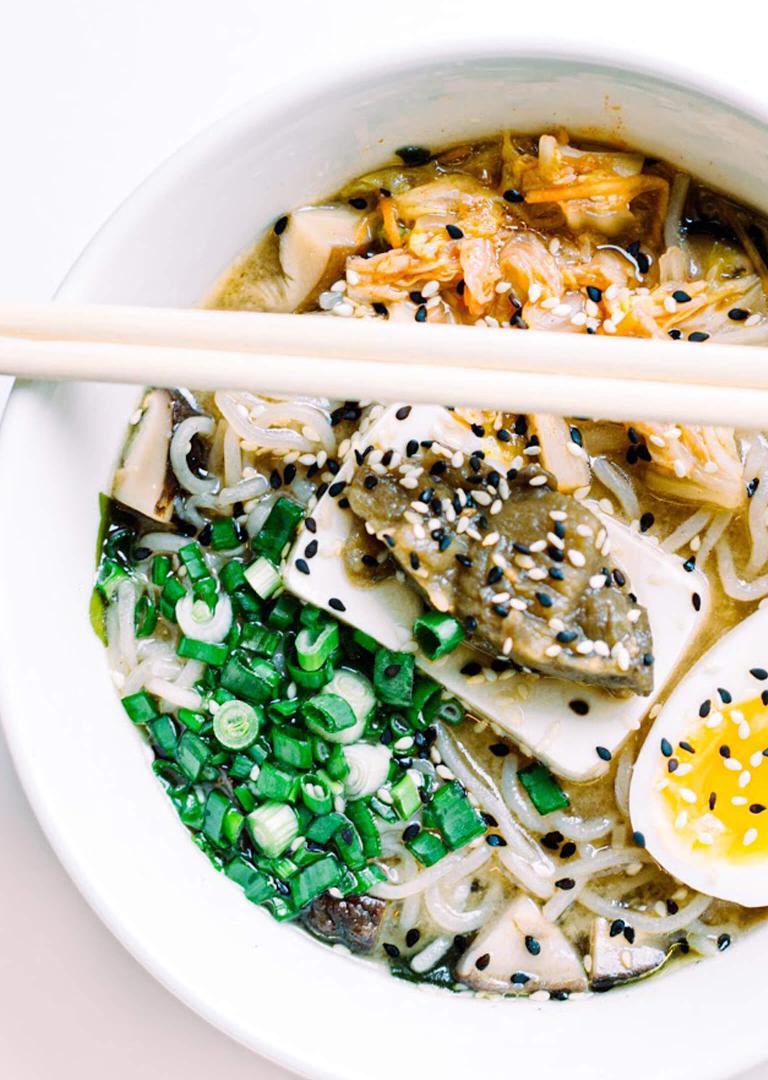




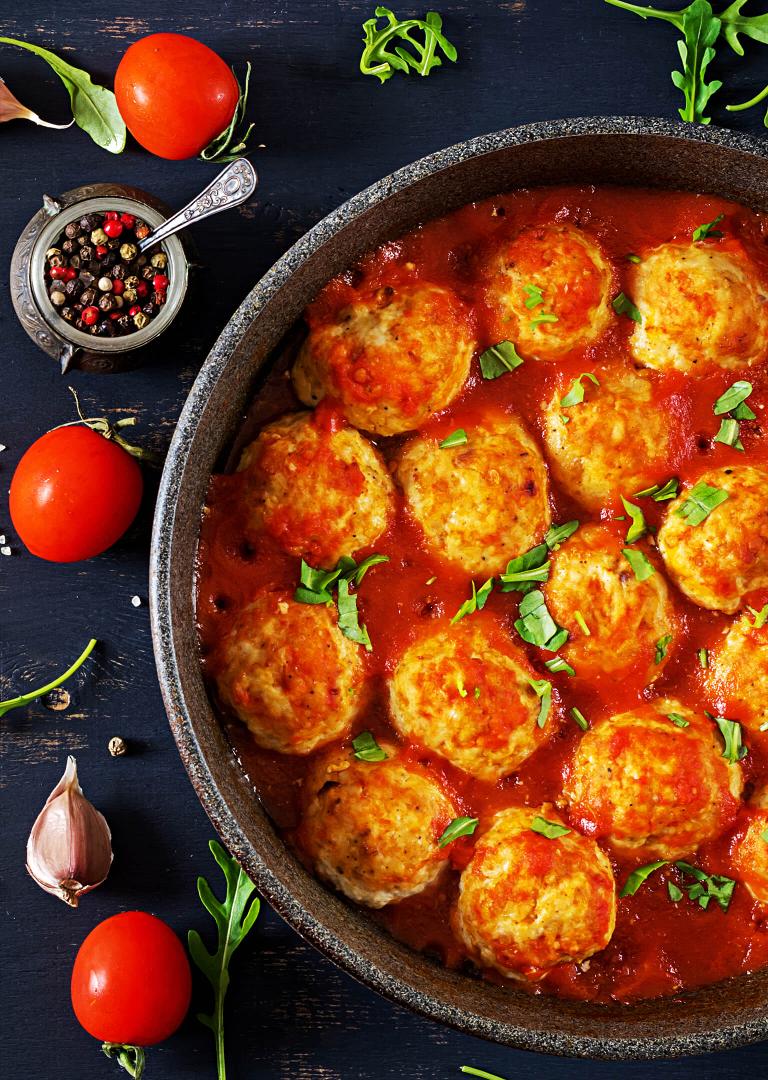
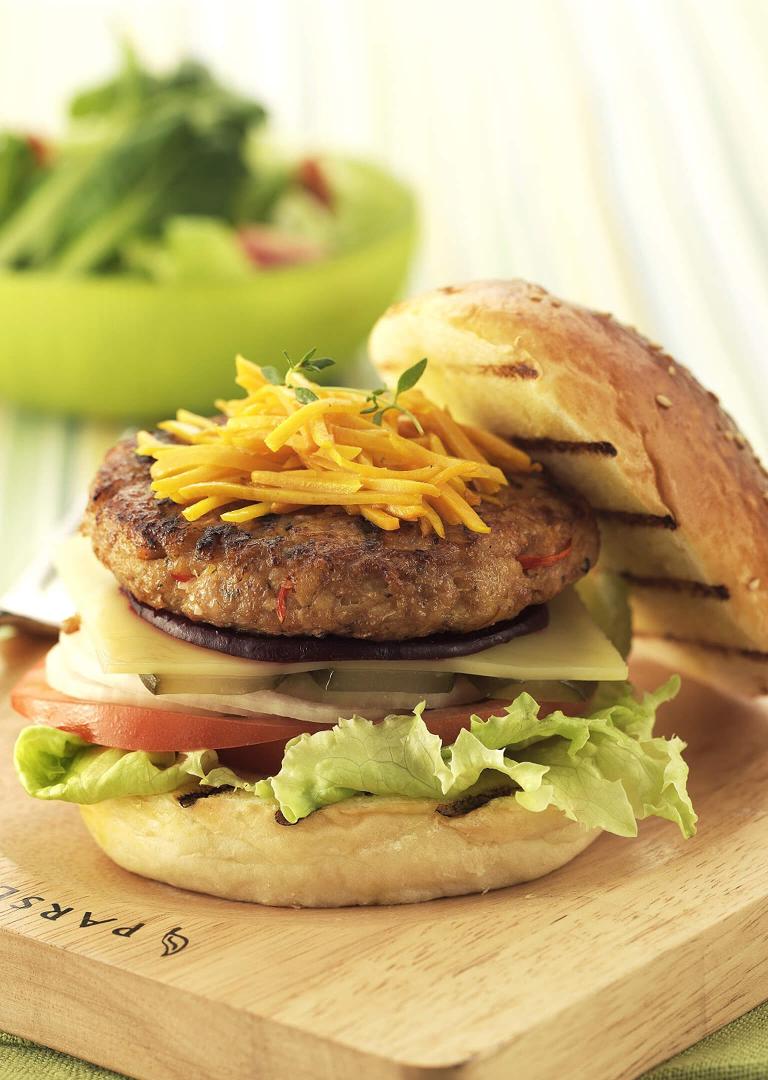


Specialized
Specialized chicken products are developed for industrial, food service, and home use.
They include major groups of raw chicken, cooked chicken, broth, fat, and dehydrated chicken.
Specialized chicken products are developed for industrial, food service, and home use.
They include major groups of raw chicken, cooked chicken, broth, fat, and dehydrated chicken.
Powdered chicken is produced from fowl or broiler meat that has been either mechanically separated or deboned by hand. The raw material is cooked, homogenized, and spray-dried to produce a fine, tan colored powder.
Powdered chicken is produced from fowl or broiler meat that has been either mechanically separated or deboned by hand. The raw material is cooked, homogenized, and spray-dried to produce a fine, tan colored powder.
Dehydrated granulated chicken is made from the same raw materials as powdered chicken.
The finished product is textured with granule sizes that range from one-eighth to one-quarter of an inch (approximately one-third to two-thirds of a centimeter).
Dehydrated granulated chicken is packed for shipment in either 50-pound (22.7 kilograms) poly-lined boxes, or in 100-pound (45 kilograms) poly-lined fiber drums.
Dehydrated granulated chicken is made from the same raw materials as powdered chicken. The finished product granule sizes that range from one-eighth to one-quarter of an inch (approximately one-third to two-thirds of a centimeter). It is packed for shipment in either 50-pound (22.7 kilograms) poly-lined boxes, or in 100-pound (45 kilograms) poly-lined fiber drums.
Dehydrated diced or irregular chicken is produced from combinations of whole chicken breasts, thighs, or finely ground chicken.
The parts are blended with seasoning and binders, then cooked into a loaf.
The cooked product is ground, diced, or random cut, and then freeze dried and packaged in moisture barrier bags.
Dehydrated diced or irregular chicken is produced from combinations of whole chicken breasts, thighs, or finely ground chicken.
The parts are blended with seasoning and binders, then cooked into a loaf.
The cooked product is ground, diced, or random cut, and then freeze dried and packaged in moisture barrier bags.
Chicken broth is primarily an ingredient used in the industrial manufacturing of consumer food items.
Chicken broth is available as both a frozen broth or as a dehydrated powder, with compositions that include MSG, fats, salt, and other ingredients.
The frozen product is packaged in 40-pound (18 kilograms) poly-lined fiber boxes, or in plastic pails in quantities up to 50 pounds (22.7 kilograms).
Dehydrated chicken broth powder is packaged in 50-pound (22.7 kilograms) boxes.
Chicken broth is available as both a frozen broth or as a dehydrated powder, with compositions of MSG, fats, salt, and other ingredients. Frozen broth is packaged in 40-pound (18 kilograms) poly-lined fiber boxes, or plastic pails in quantities up to 50 pounds (22.7 kilograms). Dehydrated broth powder is packaged in 50-pound (22.7 kilograms) boxes.
Chicken fat is used mainly in industrial food preparation, and it is available in liquid, frozen, or dry powdered form.
Chicken fat is sold in the following units:
- Poly-lined fiber boxes
- Plastic pails
- Fiber and metal drums
- Tanker loads up to 40,000 pounds (18,144 kilograms)
Chicken fat is available in liquid, frozen, or dry powdered form. It is sold in the following units:
- Poly-lined fiber boxes
- Plastic pails
- Fiber and metal drums
- Tanker loads up to 40,000 pounds (18,144 kilograms)
Mechanically separated chicken (mechanically deboned meat, or simply MDM) refers to chicken meat that has been separated from the bone and skin by a machine to form chicken products that vary in texture.
Mechanically separated chicken (mechanically deboned meat, or simply MDM) refers to chicken meat that has been separated from the bone and skin by a machine to form chicken products that vary in texture.
Finely ground emulsified chicken is packaged frozen in 40-pound (18 kilograms) poly-lined boxes, and fresh in 2,000-pound (907 kilograms) poly-lined tote bins.
Finely ground emulsified chicken is packaged frozen in 40-pound (18 kilograms) poly-lined boxes, and fresh in 2,000-pound (907 kilograms) poly-lined tote bins.
Ground chicken is packaged in the following forms:
- Frozen, in 40-pound (18 kilograms) poly-lined boxes
- Fresh or frozen, in one- to ten-pound (.45 to 4.54 kilograms) chubs
- Fresh, in 2,000-pound (907 kilograms) poly-lined tote bins
Ground chicken is packaged the following ways:
- Frozen, in 40-pound (18 kilograms) poly-lined boxes
- Fresh or frozen, in 1-10 pound (.45 to 4.54 kilograms) chubs
- Fresh, in 2,000-pound (907 kilograms) poly-lined tote bins



Preservation
Frozen chicken products in bulk are typically frozen together in containers, and individual pieces can only be removed when the entire container is defrosted.
Bulk frozen chicken products are chilled to approximately 35°F to 40°F (1.7°C to 4.4°C), packed in containers, and placed in a 0°F (-17.8°C) or below freezer.
Chicken products are generally bulk frozen within 24 to 72 hours after slaughter.
Bulk frozen chicken products have a shelf-life of up to 12 months if they are properly shipped and stored at 0°F (-17.8°C) or below.
Chicken products that have been bulk frozen are recommended for overseas shipment.
Frozen chicken products in bulk are typically frozen together in containers, and individual pieces can only be removed when the entire container is defrosted.
They are chilled to approximately 35°F to 40°F (1.7°C to 4.4°C), packed in containers, and placed in a 0°F (-17.8°C) or below freezer. Chicken products are generally bulk frozen within 24 to 72 hours after slaughter.
Bulk frozen chicken products have a shelf-life of up to 12 months if they are properly shipped and stored at 0°F (-17.8°C) or below. Chicken products that have been bulk frozen are recommended for overseas shipment.
Unlike bulk frozen products, individually frozen pieces are not frozen together, and individual pieces can be removed while in the frozen state.
The processed chicken products are frozen individually to 0°F to 5°F (-17.8°C to -15°C) before they are packed in shipping containers and placed in a freezer cooled to 0°F (-17.8°C) or below for storage.
Individually frozen chicken products have a maximum shelf-life of 12 months if they are properly shipped and stored at 0°F (-17.8°C) or below.
Products that are preserved using this method are recommended for shipment overseas.
Unlike bulk frozen products, individually frozen pieces are not frozen together, and individual pieces can be removed while in the frozen state.
The processed chicken products are frozen individually to 0°F to 5°F (-17.8°C to -15°C) before they are packed in shipping containers and placed in a freezer cooled to 0°F (-17.8°C) or below for storage.
Individually frozen chicken products have a maximum shelf-life of 12 months if they are properly shipped and stored at 0°F (-17.8°C) or below. Products that are preserved using this method are recommended for shipment overseas.
Individually "quick" frozen (IQF) processed chicken products are rapidly frozen to approximately 0°F to 5°F (-17.8°C to -15°C) within 60 minutes or less from the start of the freezing process.
Using the IQF method, the pieces are frozen separately, and individual pieces may be removed while in the frozen state.
IQF products are required to be placed in a freezer immediately after initial chilling, or held up to 48 hours at a temperature of 36°F (2.2°C), and then frozen to 0°F (-17.8°C) or lower within 72 hours of the start of the freezing process.
IQF chicken products have a shelf-life up to 12 months or more if they are properly shipped and stored at 0° F (-17.8° C) or below.
IQF chicken products are recommended for overseas shipment.
The use of the term "quick" frozen is governed by the United States Department of Agriculture (USDA).
Individually "quick" frozen (IQF) processed chicken products are rapidly frozen to approximately 0°F to 5°F (-17.8°C to -15°C) within 60 minutes or less from the start of the freezing process. IQF products are required to be placed in a freezer immediately after initial chilling, or held up to 48 hours at a temperature of 36°F (2.2°C), and then frozen to 0°F (-17.8°C) or lower within 72 hours of the start of the freezing process.
They have a shelf-life up to 12 months or more if they are properly shipped and stored at 0° F (-17.8° C) or below. IQF chicken products are recommended for overseas shipment. The use of the term "quick" frozen is governed by the USDA.
The shelf-life for plant-frozen or commercially frozen chicken products that are packaged and stored under proper conditions is normally 12 months. However, tests have proven that poultry, especially raw poultry, can be stored for several years without significant loss of shelf-life or flavor.
Frozen chicken products however can experience various stages of damage due to freezer burn, dehydration, chemical, or nutritional deterioration during shipping and storage.
Variables during shipping and storage that can affect shelf-life are:
- Temperature – maintenance of constant 0°F (-17.8°C) or below
- Time
- Protection from exposure to outside air
- Freezer air velocity
The shelf-life for plant-frozen or commercially frozen chicken products packaged and stored under proper conditions is normally 12 months. However, tests have proven that poultry can be stored for several years without significant loss of shelf-life or flavor. Frozen products can experience damage due to freezer burn, dehydration, chemical, or nutritional deterioration during shipping/storage. Variables that can affect shelf-life are:
- Temperature – maintenance of constant 0°F (-17.8°C) or below
- Time
- Exposure to outside air
- Freezer air velocity
Dehydration removes most or all moisture from the chicken. Most U.S. chicken is dehydrated by spray vacuum, roller, or freeze drying methods.
Once it has been dehydrated, the powdered, chunked, or granulated chicken product may be vacuum packaged in cans or pouches that can be safely stored for use years later.
Dried products are stored in poly-lined boxes and drums but have a shorter shelf life. For this reason, dehydrated products are recommended for overseas shipment.
Dehydration removes most or all moisture from the chicken. Most U.S. chicken is dehydrated by spray vacuum, roller, or freeze drying methods.
Once it has been dehydrated, the powdered, chunked, or granulated chicken product may be vacuum packaged in cans or pouches that can be safely stored for use years later.
Dried products are stored in poly-lined boxes and drums but have a shorter shelf life. For this reason, dehydrated products are recommended for overseas shipment.
Irradiation reduces pathogens that are sometimes found in chicken.
This preservation process can also increase the refrigerated shelf-life of fresh chicken by one week and reduce the impact of temperature variance during export operations.
Though the process is proven to be safe and reliable, irradiated poultry has not yet been cleared for sale in all countries.
For overseas shipment, it is recommended that irradiated chicken is frozen and stored at 0°F (-17.8°C).
Irradiation reduces pathogens that are sometimes found in chicken.
This preservation process can also increase the refrigerated shelf-life of fresh chicken by one week and reduce the impact of temperature variance during export operations.
Though the process is proven to be safe and reliable, irradiated poultry has not yet been cleared for sale in all countries.
For overseas shipment, it is recommended that irradiated chicken is frozen and stored at 0°F (-17.8°C).


Requests
If this is your first trade lead request, please start by adding your company’s name in our online Trade Lead Request Form. There are not any costs for using the USAPEEC Trade Lead process.
Add the details of your company, contacts and product request specifics.
After your request is submitted, the USAPEEC staff will get to work finding the appropriate supplier for your needs. The supplier will then contact you directly to start the negotiating process.
If this is your first trade lead request, please start by adding your company’s name in our online Trade Lead Request Form. There are not any costs for using the USAPEEC Trade Lead process.
Add the details of your company, contacts and product request specifics.
After your request is submitted, the USAPEEC staff will get to work finding the appropriate supplier for your needs. The supplier will then contact you directly to start the negotiating process.
Welcome back! Please start by searching our database for your company’s name, URL, or email in our online Trade Lead Request Form.
After your company is found, add your product request details and remember to update any company and contact information. Once your request is submitted, the USAPEEC staff will get to work finding the appropriate supplier for your needs. The supplier will then contact you directly.
Welcome back! Please start by searching our database for your company’s name, URL, or email in our online Trade Lead Request Form.
After your company is found, add your product request details and remember to update any company and contact information. Once your request is submitted, the USAPEEC staff will get to work finding the appropriate supplier for your needs. The supplier will then contact you directly.
Request Form Qualify
& Research Product
Request Available Supplier
Contacts You Negotiates
With You Ship
Products
USAPEEC is a trade association supported by U.S. Suppliers with the ability to fast-track your needs at no extra cost.
Please fill out all required fields.


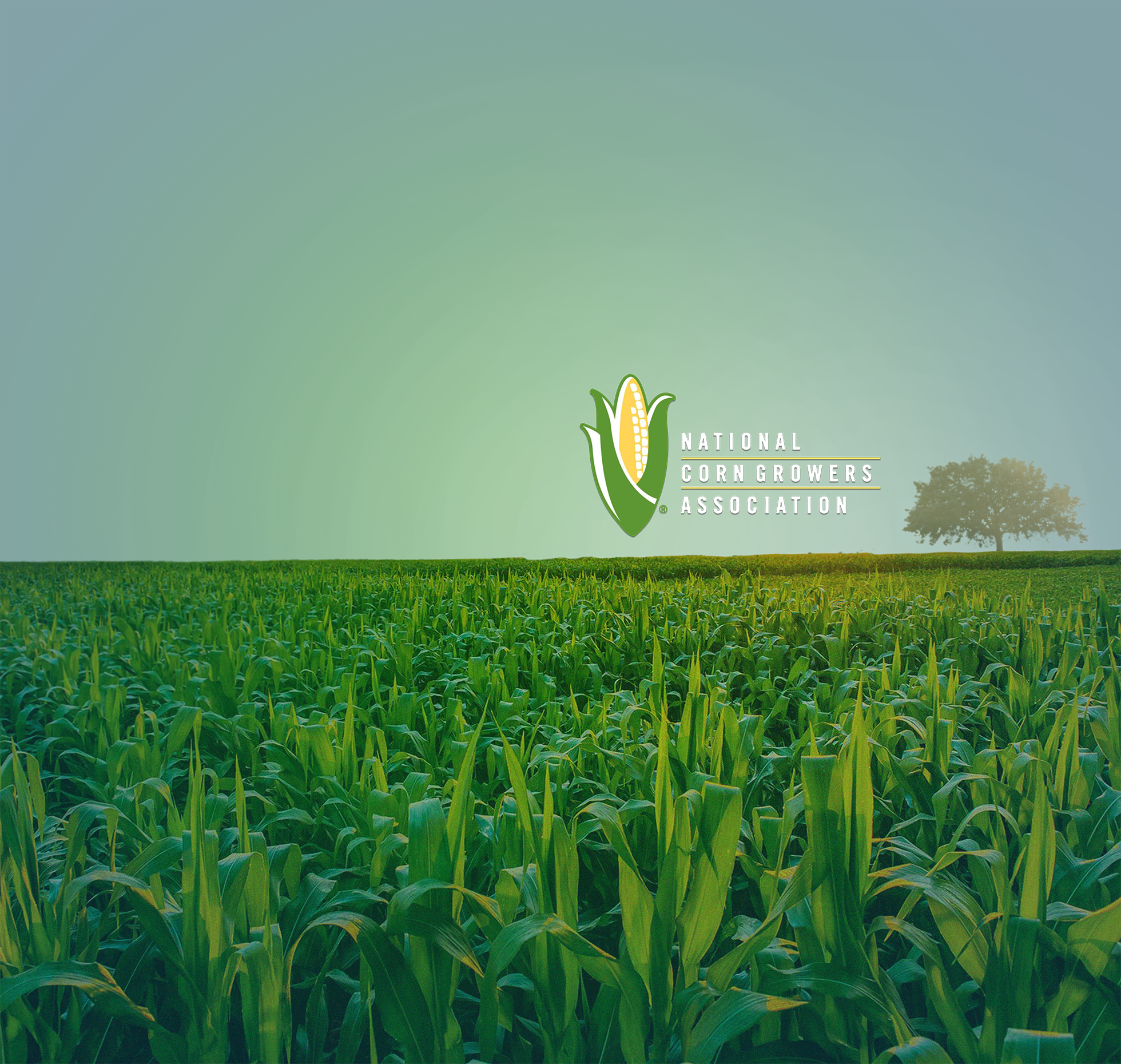
Sustainable for a Growing World
America’s corn farmers have a vested interest in sustainably feeding a growing world. We are doing this not only by working and engaging with our animal agriculture and industry allies, but also with non-traditional partners, like the Environmental Defense Fund.
Since 1980, corn farmers have diligently accomplished numerous achievements: 68 percent decrease in soil loss, 36 percent decrease in greenhouse gas emissions, and 44 percent decrease in required energy to produce a bushel of corn.
Advancements in agricultural technology have assisted the industry in doubling corn yields with less negative externalities on the environment. Corn yields are expected to continue to increase along with projected declines in negative environmental impacts.
America’s corn farmers have a vested interest in sustainably feeding a growing world. Since 1980, corn farmers have diligently accomplished numerous achievements: 68% decrease in soil loss, 36% decrease in greenhouse gas emissions, and 44% decrease in energy required to produce a bushel of corn.
The National Corn Growers Association (NCGA) continues to play a paramount role in the sustainability space, spearheading industry goals and continuously raising the bar for what it means to be a true steward of the land. NCGA is not only engaged with our animal agriculture partners, being a part of the U.S. Roundtable for Sustainable Beef, Dairy Sustainability Alliance, and others, but are also a part of the following initiatives:
- The Soil Health Partnership, celebrating its 5th year, is a network spanning 16 US states focused on research protocols and shared recommendations for farmers to improve productivity and sustainability specific to soil health.
- The Success in Stewardship Network, which launched in February, is a partnership with the Environmental Defense Fund to accelerate conservation practices on corn farms.
- Field to Market is an alliance bringing together supply chain stakeholders to identify opportunities to conserve soil, improve water use, and reduce energy use.
NCGA continues to play a paramount role in the sustainability space, spearheading industry goals and continuously raising the bar for what it means to be a steward of the land. NCGA is engaged with our animal agriculture partners as a part of the U.S. Roundtable for Sustainable Beef, Dairy Sustainability Alliance, as well as other initiatives.
Corn growers and the poultry industry, one of their principal customers, have had a long and mutually beneficial relationship and continue to need each other to remain profitable. Corn and its co-products, such as high protein distillers’ grains, are an excellent, economically efficient way to add valuable nutrient components to the poultry diet, including energy, protein, phosphorus, and xanthophylls.
Corn growers and the poultry industry, one of their principal customers, have had a long and mutually beneficial relationship. Corn and its co-products, such as high protein distillers’ grains, are an excellent, economically efficient way to add valuable nutrient components to the poultry diet, including energy, protein, phosphorus, and xanthophylls.
U.S. poultry consumes over 1.2 billion bushels of the approximately 14 billion bushels of corn produced annually. Through its partnership with USAPEEC, NCGA actively works through our annual carryover stocks by exporting even more corn through poultry year over year as U.S. corn farmers continue their efficiencies and yield gains.
Not only is U.S. corn affordable, sustainable, and abundant, it is also inspected and graded per the USDA Federal Grain Inspection Service Standards. Poultry buyers can rest assured that U.S. corn-fed poultry is top quality.
In the 2019-2020 Harvest Quality Report, 54.6 percent and 81.7 percent of samples met the grade requirements for U.S. No. 1 and U.S. No. 2 corn, respectively. Additionally, 99.4 percent of samples tested below the U.S. FDA action level for aflatoxin and 97.2 percent tested below 5.0 ppb.
Not only is U.S. corn affordable, sustainable, and abundant, it is also inspected and graded per the USDA Federal Grain Inspection Service Standards. Poultry buyers can rest assured that U.S. corn-fed poultry is top quality.
The National Corn Growers Association was founded in 1957 and represents 40,000 dues-paying corn farmers across the nation, as well as the interest of more than 300,000 corn growers who contribute through their states’ checkoff program. With our 50 affiliated state organizations, we work together to create and increase opportunities for corn growers while aspiring to sustainably feed an exponentially growing world.
For more information on the National Corn Growers Association, our programs, and priorities, please visit:
ncga.comThe NCGA was founded in 1957 and represents 40,000 dues-paying corn farmers across the nation, as well as the interest of over 300,000 growers who contribute through their states’ checkoff program.
ncga.com



Commitment to Continuous Improvement
Recognized for its quality, composition, and myriad benefits, U.S. Soy is built on America’s soybean farmers’ commitment to continuous improvement, innovation, and sustainable growing practices. Soybean meal is a high quality option for animal feed. Its protein and range of nutritional benefits make it a popular choice for poultry diets.
Recognized for its quality, composition, and myriad benefits, U.S. Soy is built on America’s soybean farmers’ commitment to continuous improvement, innovation, and sustainable growing practices. Soybean meal is a high quality option for animal feed due to its protein and nutritional benefits.
While U.S. soybean farmers know how much pride they take in protecting both land and water resources, it is even more important to tell that story to the rest of the world. As more customers demand sustainably produced products, it is imperative that soybean farmers evaluate and consider practices that will meet those demands.
In 2015, the United Nations announced 17 Sustainable Development Goals (SDGs) to “provide a shared blueprint for peace and prosperity of people and the planet, now and into the future.” Agriculture plays an important role in addressing the SDGs, and as a global industry, U.S. Soy embraces sustainable agricultural practices, meeting today’s global needs for soy products without compromising the future. In 2019, a soy checkoff-funded initiative mapped the SDGs that connect to U.S. Soy’s priorities by using in-depth stakeholder research to understand U.S. Soy’s potential to contribute to the global UN goals.
More customers demand sustainably produced products, it is imperative that soybean farmers evaluate and consider practices that will meet those demands. In 2015, the UN announced 17 Sustainable Development Goals (SDGs) to follow now and in the future.
The U.S. Soybean Sustainability Assurance Protocol (SSAP) guidelines cover today’s regulatory obligations regarding sustainable practices, but they also call for continuous improvement. Every day, U.S. soybean farmers work harder to be more efficient and environmentally sound. Along those lines, they have established continuous improvement goals for the next five years.
Based on benchmarks from 2000, by 2025, U.S. soybean producers aim to:
- Reduce land-use impact by 10% (land area per unit of production, hectares per metric ton of acres per bushel).
- Reduce soil erosion by an additional 25% (land area per unit of production, tons per bushel).
- Increase energy-use efficiency by 10% (energy unit per unit of production, joules or BTUs per bushel).
- Reduce total greenhouse gas emissions by 10% (units of gasses emitted per year, kilograms or pounds of CO2 &mdash equivalent gasses emitted per year).
The U.S. Soybean Sustainability Assurance Protocol (SSAP) guidelines cover obligations regarding sustainable practices. U.S. soybean producers aim to: Reduce land-use impact by 10%, reduce soil erosion by an additional 25%, increase energy-use efficiency by 10%, and reduce greenhouse gas emissions by 10%.
U.S. soybean meal’s high quality composition has long been prized by feed manufacturers and formulators. All quality indicators of soybean meal, such as crude protein, crude fiber, neutral detergent fiber, sugars, and amino acid profiles, should be taken into account by purchasers to determine the meal’s true value. Recently, a meta-analysis looked at 18 different studies and 1,944 samples of soybeans from Argentina, Brazil, India, and the United States to quantify the relationship between the country of origin and the chemical composition, protein quality, and nutritive value of the resulting soybean meal. The data from this study were then processed by the Nutrient Value Calculator (NVC), a software tool constructed by Genesis Feed Technologies. This cost analysis supported the economic benefits of U.S. soybean meal relative to meal from other origins as a key ingredient in poultry rations.
U.S. soybean meal’s high quality composition has been prized by feed manufacturers/formulators. Quality indicators of soybean meal, such as crude protein, crude fiber, neutral detergent fiber, sugars, and amino acid profiles, should be taken into account to determine the meal’s true value.
The United Soybean Board’s 78 volunteer farmer-directors work on behalf of all U.S. soybean farmers to achieve maximum value for their soy checkoff investments. These volunteers invest and leverage checkoff funds in programs and partnerships to drive soybean innovation beyond the bushel and increase preference for U.S. Soy. That preference is based on U.S. soybean meal and oil quality and the sustainability of U.S. soybean farmers. As stipulated in the federal Soybean Promotion, Research and Consumer Information Act, the USDA Agricultural Marketing Service has oversight responsibilities for USB and the soy checkoff.
For more information on the United Soybean Board, visit:
unitedsoybean.orgThe United Soybean Board’s 78 volunteer farmer-directors work on behalf of all U.S. soybean farmers to achieve maximum value for their soy checkoff investments. For more information, visit:
unitedsoybean.org